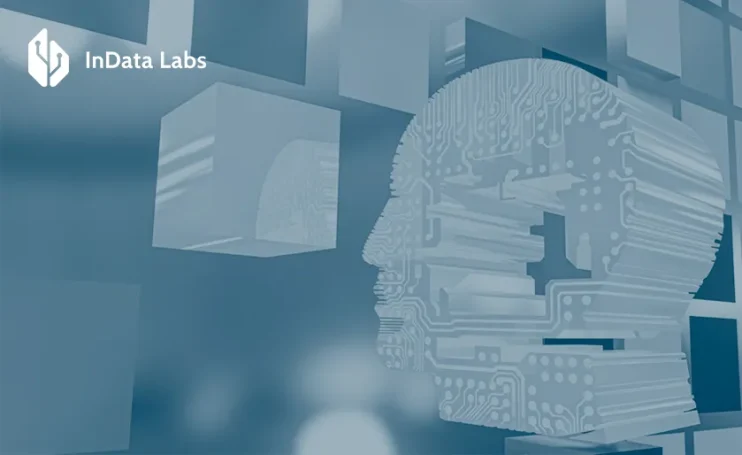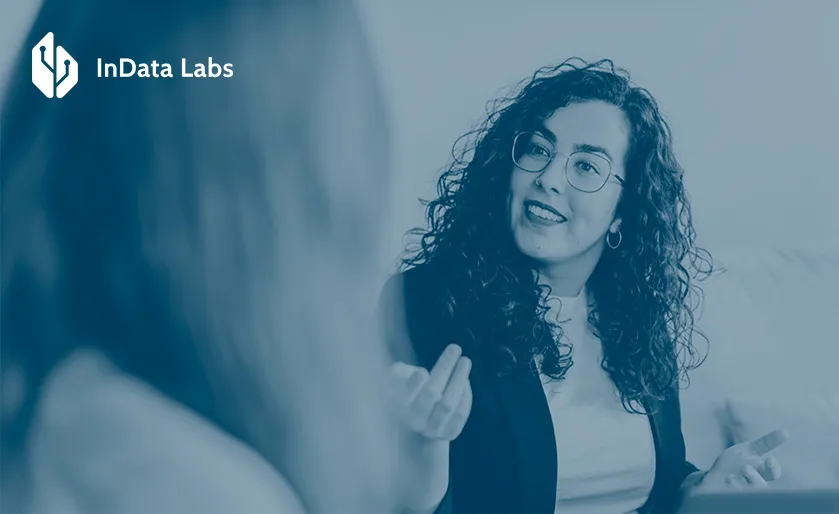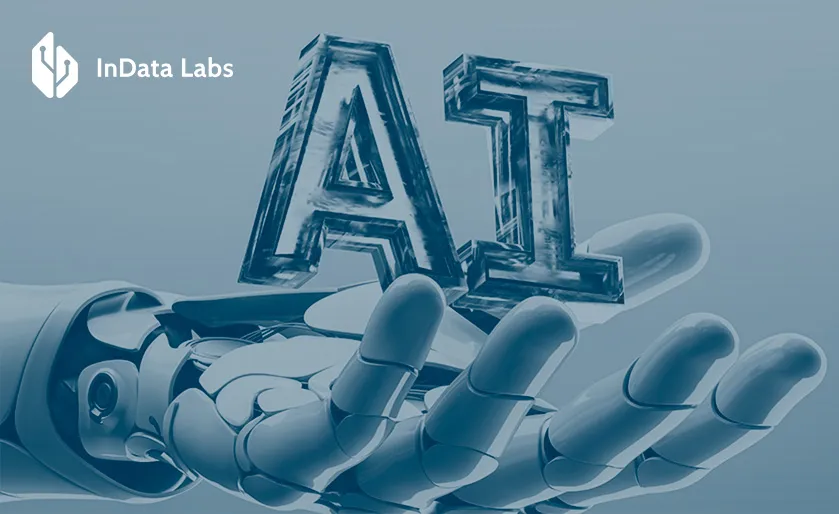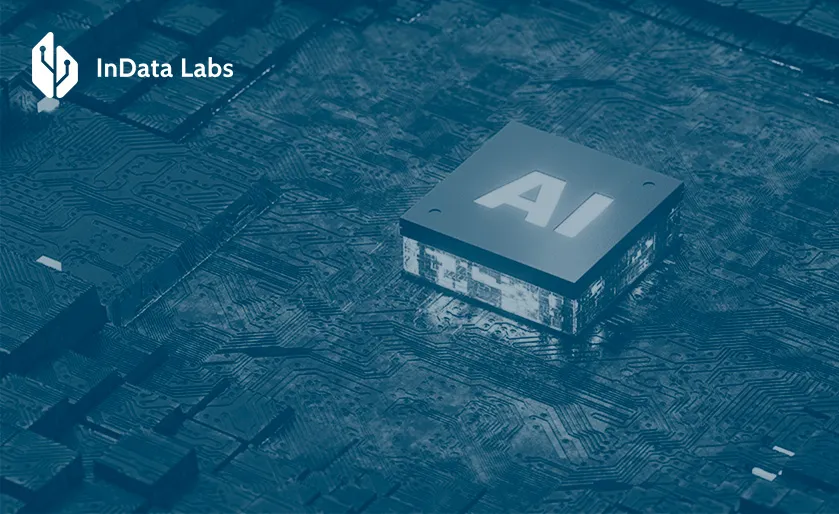We are all witnessing a new era of technological innovation with more and more businesses adopting machine learning solutions and implementing AI projects at different corners of the world. However, not every AI project succeeds, and this is where AI Proof of Concept (or PoC) comes into play.
It’s among the most popular artificial intelligence application testing methods, allowing companies to clearly understand how AI can solve their business problems before investing their financial resources into developing a full-fledged AI product.

Source: Unsplash
The concept of artificial intelligence and AI management consulting have gained tremendous popularity and investments in machine learning solutions are increasing rapidly worldwide.
According to the Forbes Advisor survey, over 64% of businesses strongly believe that AI is the key to increasing their productivity, while 72% have already adopted AI business solutions in their daily operations.
The same source states that the AI market is predicted to grow significantly, reaching $1,339 billion by 2030 (the projected revenue in 2024 used to be $214 billion). This article explores the AI proof of concept, its benefits, and key steps to guide you efficiently through the AI PoC creation process.
What is an AI proof of concept?
An artificial intelligence PoC refers to a method for testing an AI solution to have a clear idea of the model’s feasibility. The main goal of creating an AI PoC is the validation of the concept, the assessment of the solution’s potential advantages, and the identification of any possible challenges or problems.
Generally, AI PoC can be described as a process of building a small-scale version of the suggested artificial intelligence initiative and exploring the model in controlled conditions to find out whether it’s in line with the objectives of the AI project. In this way, businesses can easily figure out whether it’s a worthy investment.
Typically, AI engineers build a miniaturized version of the project to check the output of the model. The results help make a crucial decision of either abandoning or proceeding with the project.
Mostly, a small-scale AI system is adjusted to address the existing problems before being fully implemented. If compared with standard software PoC, an AI PoC is more complex, as it not only involves assessing the information input and output but also testing whether the proposed AI model is able to adapt to changing data patterns and external environment.
Furthermore, certain AI systems may have specific ethical implications and technicians should evaluate any possible biases in the data provided into the system.
5 key features of AI PoC
Here are the essential features of the artificial intelligence proof of concept:
- The main purpose of a PoC is the verification related to the implementation of a concrete theory or concept. In terms of AI, PoC checks whether a certain AI model is able to achieve the objectives of the AI project.
- The scope of PoC AI is narrow, as it involves validation of the AI model’s feasibility. The PoC in AI isn’t focused on scalability or integration process with any other system.
- The PoC for AI is mainly a short-term project and unlike a pilot project, it requires fewer financial means. It’s all about determining the viability of the AI model before making any significant investments. The exploratory nature of the AI PoCs makes it less risky, as no large financial resources are required in this case.
- The outcome of an AI PoC serves as proof of the AI initiative’s feasibility. In other words, it’s a key step to validate the technical features of the AI project prior to advancing to broader testing and development processes.
Benefits of conducting AI PoCs
Let’s take a closer look at the key benefits of artificial intelligence PoC:
Minimizing risk
Creating an AI product is expensive, but conducting an AI proof of concept can help businesses get value for the financial resources that they allocate to their AI projects. That’s to say, without spending a lot of funds, PoCs make it possible to test crucial aspects of AI initiatives.
With artificial intelligence PoC, businesses can efficiently preserve a balance between their expenditure and returns, as it serves as a key to ensuring that their returns are more than the investments.

Source: Unsplash
AI PoCs also enable different organizations and companies to utilize their own data on artificial intelligence systems and test whether they are compatible.
Furthermore, with PoCs, businesses can also learn whether the data they provide is sufficient. In some cases, it’s necessary to enhance their collection, as well as preprocessing techniques. Refining their information can provide helpful insights into potential challenges and leaks that waste their financial resources.
Revealing possible challenges
AI model development process may have problems that are more expensive to solve during the post-development period. Conducting PoC can help businesses identify potential issues without spending significant financial resources.
A small-scale version of the AI project can be tested by the company’s development team to uncover the underlying challenges and bottlenecks. If the problem is serious, and its solution requires much money, the stakeholders may make a decision to discard the AI initiative.
Convincing investors
Recent studies revealed that 3 in 5 people are skeptical of AI systems and have trust issues. An AI PoC is an efficient method to test the feasibility of the AI initiative and show investors and stakeholders the numerous benefits of this technology. As a result, your AI project may receive relevant funding for full-scale implementation.
Proving the efficiency of AI technology may foster the adoption of artificial intelligence for small business operations, as well as enhance the efficiency of medium and large enterprises.
Increasing competitiveness
The business world is extremely competitive today and wasting funds may have a negative impact on the company’s competitiveness in the market.

Gaining immediate value and the opportunity for analysis
AI proof of concept allows for gaining exact proof related to the AI model’s efficiency that may justify further investment efforts. In addition, you can have a chance to test, compare, and analyze various AI solutions and methodological approaches before choosing a concrete direction.
Acquiring valuable knowledge and making informed decisions
AI proof of concept can give you valuable information about your data needs, and the skillsets you may need for your AI projects in the future. This may lead to informative decision-making when it comes to your journey in the AI world.

Source: Unsplash
Duration of an AI proof of concept
Typically, the duration of the AI PoCs is short, ranging from 4 to 6 weeks. However, the exact duration depends on certain factors, including:
- It’s essential to take into consideration the complexity level of the AI business use cases. Usually, when the use case is simple, less time is required, whereas, for complex projects, the development timeline is longer.
- The objectives and the clarity of the preferred outcome can have a significant impact on the length of the development cycles.
- The AI proof of concept process may take longer if the data quality is low or not sufficient.
- If the team has extensive expertise, AI PoCs are completed quicker, if compared with those who are less experienced.
Why is it worth conducting AI PoC?
Let’s explore the main reasons behind conducting an AI Proof of Concept:
- The primary purpose of the PoC is to validate the AI initiative’s viability and ensure that it can complete the task or effectively solve the problem.
- The success of the artificial intelligence PoC can turn into an attractive case study that proves the AI solution’s value to stakeholders and skeptical investors.
- You can gain essential insights into the AI model’s performance, fine-tuning and optimizing it for real-world implementation.
- The identification of any possible issues while conducting AI PoC can reduce risks related to the full-scale project.
Stages of an AI proof of concept
The key steps of conducting AI PoC are as follows:
Determining the goals of the AI initiative
The first stage of AI PoC involves the assessment of the company’s needs and finding out how the proposed AI solution can improve business operations and what added value it can bring. That’s why, the engagement of both stakeholders and engineers is crucial. This stage consists of brainstorming activities and discussions to ensure that the proposed AI model can be highly beneficial for the business.
Here are several questions that may be helpful:
- What is the specific problem you aim to solve or what task do you want to complete with the proposed AI initiative?
- How will the results be evaluated to prove the project’s success?
- Have you already tried to solve the issue using other methods or technologies?
- How will it impact the company’s business operations?
- Are the expected results significant enough to invest in this initiative?
- What are the possible risks associated with the project?

Source: Unsplash
Selecting and preparing data
It’s essential to prepare relevant datasets by identifying the most appropriate sources of structured, as well as unstructured data because the quality of the prepared data has a significant impact on the quality of the artificial intelligence model training.
So, what does the data preparation include? It involves the following processes: a) data cleaning, b) getting rid of all the inconsistencies and c) adding the values that are missing.
Moreover, an efficient data governance framework should implemented for not only managing and protecting but also for refining the value of data.
Building an artificial intelligence proof of concept
Companies have the option of building AI proof of concept with the help of their teams or outsourcing a specialized external service.
To come up with the appropriate solution that meets your business needs, it’s important to experiment with various AI algorithms and models. AI project’s success also depends on companies taking a step-by-step approach, focusing on ongoing testing, and clear guidelines to ensure productivity and effectiveness.
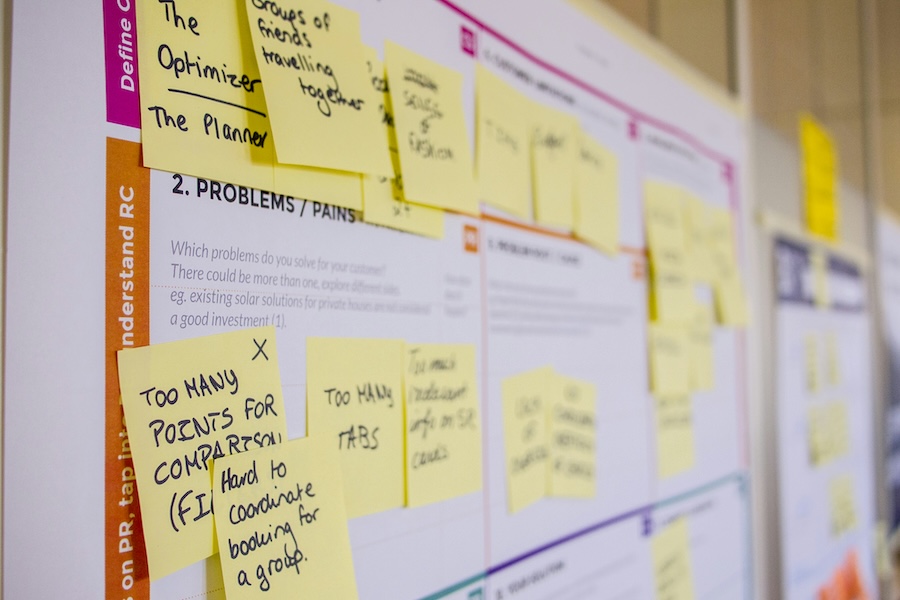
Source: Unsplash
Evaluating an AI PoC
Another vital step is the evaluation of the model in the context of a business perspective. The answers to these questions may be useful for the evaluation process:
- Is the AI model able to solve the issue you initially aimed to address?
- Does the model help gain actionable insights improving the decision-making or enhancing the company’s business operations?
In short, AI proof of concept isn’t focused on technical improvement, but the goal is to evaluate the AI initiative’s potential value.
Carrying out revalidation and scaling
This step may have one of these 3 results regarding AI PoC: a) success, b) partial success, and c) failure.
The concept should be re-validated if the AI initiative has demonstrated its efficiency and value (to a certain extent).
Re-validation can be described as a process of improving the AI model focusing on knowledge gained during the initial deployment and adding more data to improve the model’s performance.
Scaling up refers to expanding the deployment of the AI initiative and advancing to the full-scale development of the AI model based on the insights gained from the AI proof of concept. This stage is considered only in cases when the AI solution has demonstrated high performance and feasibility.
To sum up, AI’s rapid evolution has the potential to shape our future by increasing productivity and efficiency across various industries, such as finance, healthcare, education, etc. As AI continues to advance, this technology is gaining more and more transformative power, offering new solutions and innovative opportunities.

The role of an AI proof of concept is crucial, as it not only provides a detailed and concrete roadmap but also fosters a more efficient and strategic allocation of resources. It can lead to noticeable improvements in the performance and effectiveness of the end solution.
If you are looking for efficient AI consulting and AI software development services, or want to provide quality customer experience, contact us. Our experienced team will guide you through your AI integration journey, helping you test your AI project’s feasibility and maximize your investment’s value.
With the guidance of our dedicated generative AI consultants, your dream AI project can become a reality. We offer top-tier generative AI development services designed to optimize your business operations.
Author bio
Tatevik Karapetyan is a researcher and content writer with over 8 years of experience. She is currently a PhD candidate at the Doctoral School of Social Sciences at the University of Warsaw, focusing on empowering women through STEM education and career pathways. Tatevik holds a Master’s degree in European Interdisciplinary Studies and a Bachelor’s degree in English Language and Literature.
